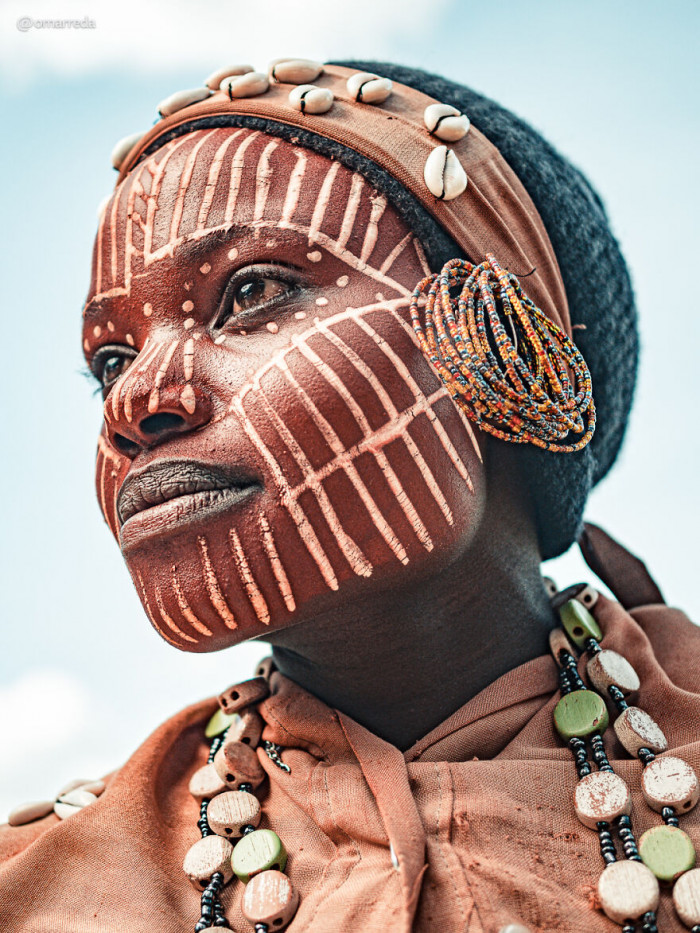These 18 Photos Show The Incredible Beauty Of Tribal Life In Kenya
We live in an incredible world full of differences, contrast, unique cultures, and civilizations. The photographer Omar Reda has proven that point by capturing the beauty and joy of the Kenya tribes.
He was born in Lebanon in 1984. Since he was a child, he wanted to travel the world and see its magnificence as much as possible, so now he is living his dream life and sharing it with us.
There are a lot of tribes in Kenya, one of the most evolved African countries, and Omar Reda made sure to capture the uniqueness of a few of them. The essential part between tribes is fashion, it gives them identity and emphasizes their diversity.
Fashion for them is not just jewelry they wear, but something that presents them as personalities. Each tribe has its own tradition, and they also represent it with their style.
Omar Reda is fascinated by various tribal traditions, but he is also worried that rapid globalization could affect their practices. He says, "Tribal life is fading with the invasion of the modern lifestyle. Kenya is one of the most advanced African countries, and one can notice that tribes are affected by globalization."
But one thing is sure, they proudly show and wear their diversity and tradition. Below, you can take a look at Omar's collection of photos and witness the fascinating disparity between the different Kenyan tribes.
1. The Kikuyu tribe. They are also called Agikuyu or Gikuyu.
 Omar Reda
Omar Reda2. The Samburu people.
 Omar Reda
Omar Reda3. The Samburu people are a sub-tribe of the Maasai.
 Omar Reda
Omar Reda4. They live in north-central Kenya and speak the Samburu dialect of Maa language.
 Omar Reda
Omar Reda5. The Maasai community counts 22 sub-tribes and all of them speak the Maa language.
 Omar Reda
Omar Reda6. The Samburu is the third in size sub-tribe of the Maasai community in Kenya.
 Omar Reda
Omar Reda7. Women of the Samburu tribe wear two pieces of cloth in blue or purple color. The bottom is wrapped around the waist and the upper is wrapped over the chest.
 Omar Reda
Omar Reda
8. Maasai tribe inhabits northern, central, and southern Kenya. They speak the Maa language.
 Omar Reda
Omar Reda
9. Kikuyu tribe has a population of 8,148,668 inhabitants, and they are the largest ethnic group in Kenya.
 Omar Reda
Omar Reda
10. The Borana tribe is one of the two main sub-tribes of the Oromo people.
 Omar Reda
Omar Reda
11. They live in northern Kenya regions and speak the dialect of Oromo.
 Omar Reda
Omar Reda
12. It is an interesting fact that Borana people give names to their children after they turn three years old.
 Omar Reda
Omar Reda
13. The Turkana tribe lives in northwest Kenya and speaks the Turkana language.
 Omar Reda
Omar Reda
14. Maasai people were blue, black, striped, and plaid cloth, but the red color is favored.
 Omar Reda
Omar Reda
15. The Maasai people started to replace animal skin cloth with commercial cotton cloth in the 1960s.
 Omar Reda
Omar Reda
16. Traditionally, both men and women wear wrapped clothes made of animal skins, but nowadays many of them adopted western-style clothes.
 Omar Reda
Omar Reda
17. There are many jewelry designs that are unique to the Turkana individuals.
 Omar Reda
Omar Reda
18. The name for Maasai traditional sheets that are worn wrapped around the body is 'Shúkà'. It is usually red.
 Omar Reda
Omar Reda
All these Keniya tribes are unique and distinguish their own tradition and beauty, and Omar has captured it for all of us. Just watching photos evoke lovely feelings like you are watching it live.
If you like this incredible work, you can check more of it on Omar's Instagram or his webpage.




